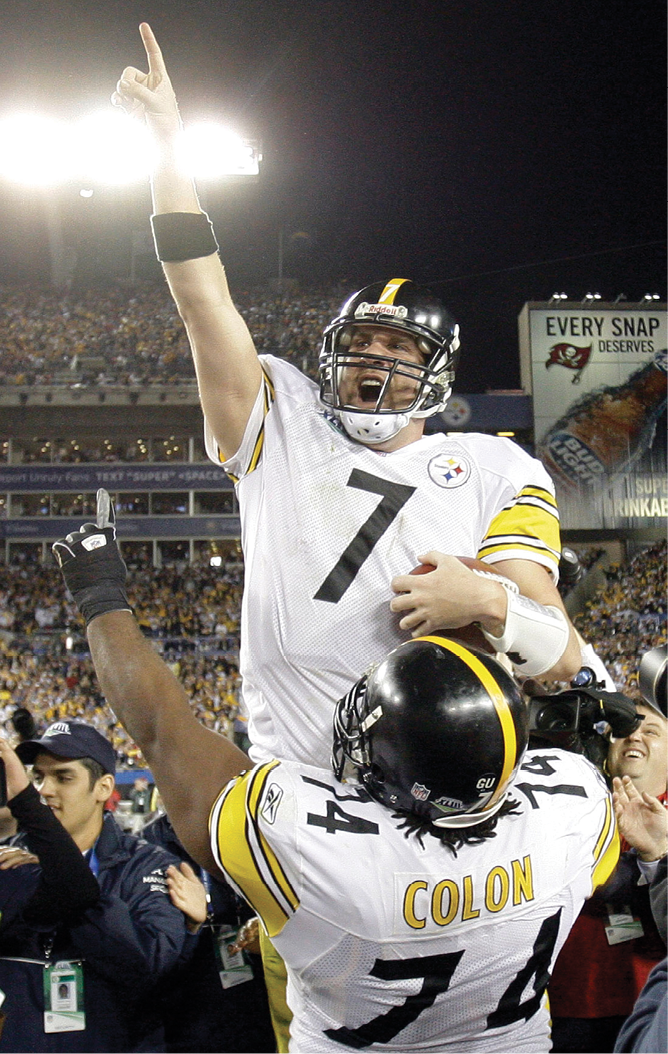What the Future Holds for the Steelers
One of Mike Tomlin’s greatest strengths as a coach is not allowing any semblance of excuse to seep into the mindset of his players. Ask him about the impact of injuries and he will invariably cite them as being as much a part of football as blocking and tackling. Fittingly, the 2015 season affirmed that as cliché as the Steelers’ “next man up” mantra is, few execute it better than they do.
The Steelers won 10 regular-season games despite a rash of injuries that forced them to start three different quarterbacks, plug in an untested NFL player at left tackle, and play all but six games without their All-Pro running back.
They won their first postseason game since the 2010 season at Cincinnati and nearly upset the Broncos in Denver in the divisional round of the playoffs. The Steelers played their final game without All-Pro wide receiver Antonio Brown and were down to undrafted free agent Fitzgerald Toussaint and journeyman Jordan Todman at running back because of injuries. Publicly Tomlin and the Steelers dismissed what might have been had they been healthier.
Privately the Steelers had to agonize over the missed opportunity to at least get back to the Super Bowl for the simple reason that quarterback Ben Roethlisberger turned 34 a month after the Broncos won it all in 2015.
The Steelers have said it is not time to start looking for Roethlisberger’s eventual replacement in the NFL draft and he might well have another good five seasons left in him. But he is much closer to the end of what I believe is a Pro Football Hall of Fame career than the beginning of it.
What should make Steelers fans shudder is the number of quarterbacks the team went through between Terry Bradshaw and Roethlisberger. Instability at the position is the biggest reason why the Steelers made just one Super Bowl appearance from 1980 to 2004 and the position is both more important and harder to scout than ever with the proliferation of spread offenses at the college level.

The Steelers have stood tall since Ben Roethlisberger burst onto the scene in 2004 as a rookie, winning a pair of Super Bowls. They have committed to maximizing his remaining seasons by surrounding Big Ben with elite talent.
The good news for the Steelers is they remain one of the most stable organizations in all of sports. They have a plan and are not prone to the kind of knee-jerk reactions that have some organizations in a perpetual chase of their tail. Tomlin and general manager Kevin Colbert work exceptionally well together, bound by mutual respect and a burning desire to win.
Their relationship goes a long way toward heading off dysfunction and keeping everyone rowing, if you will, in the same direction. Neither is perfect, as some segment of Steelers fans expect them to be, but the Steelers have appeared in two Super Bowls, won one of them and have yet to post a losing season since Tomlin and Colbert have worked together.
Colbert said after the 2013 season that the Steelers planned to maximize Roethlisberger’s remaining seasons and they have done that by surrounding him with talent. The offense alone, if it stays relatively healthy, should make the Steelers Super Bowl contenders for the foreseeable future. And a defense that the Steelers have rebuilt on the run will only get better with Keith Butler running it. Butler succeeded Dick LeBeau in 2015 and proved that he is more than capable as a defensive coordinator. Wait until he gets more pieces to bolster the Steelers’ secondary and their pass rush.
It is impossible to predict when the Steelers will give headline writers everywhere a layup—Stairway to Seven, Seventh Heaven, Seven Up—by winning another Super Bowl. Their position of strength would quickly erode if Roethlisberger suffers a major injury—or the bill comes due for all the punishment he has absorbed in his first 12 NFL seasons.
One certain thing is that Terrible Towels will continue to wave in Heinz Field and stadiums across the country. There is too much of a foundation—from Art Rooney and Chuck Noll and the 1970s dynasty to the Steelers’ run from 2005 to 2010—for fan support to fade.
Steelers’ fans take as much pride in their fierce loyalty as they do their favorite team’s success. That is why Steelers Nation is anything but a cliché—few organizations can actually make this claim—and it only seems to be growing. Hopefully members enjoyed this book and will use it as they cross off items on their Steelers bucket list.